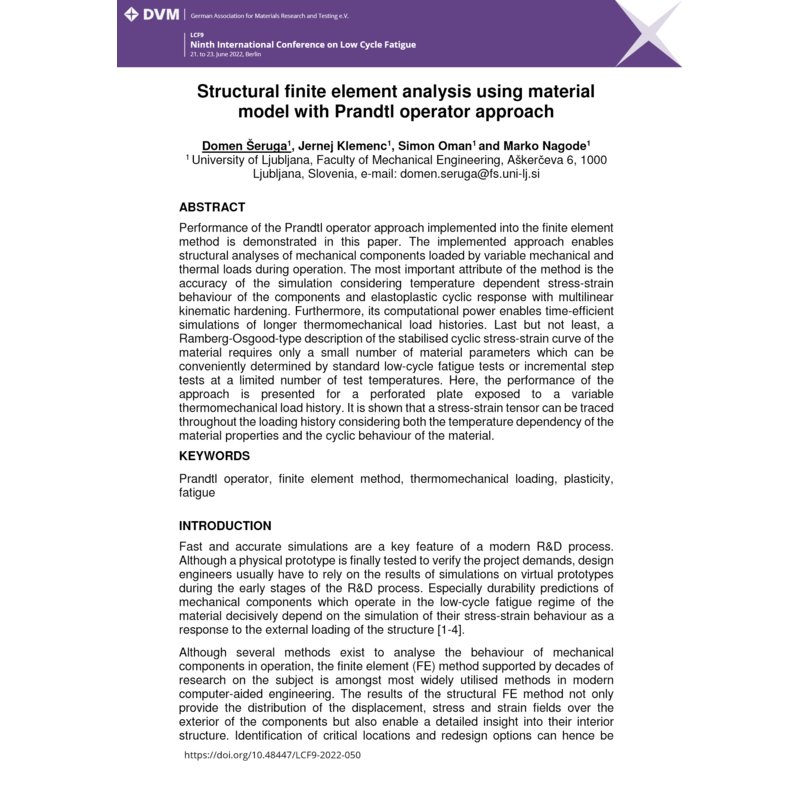- Nur online erhältlich




Datenschutzbedingungen (bearbeiten im Modul "Kundenvorteile")

Lieferbedingungen (bearbeiten im Modul "Kundenvorteile")

Rücksendebedingungen (bearbeiten im Modul "Kundenvorteile")
[1] Šeruga et al. Durability prediction of EN 1.4512 exhaust mufflers under thermomechanical loading, International Journal of Mechanical Sciences 84 (2014) 199-207
[2] Bartošák et al. Life assessment of a 42CrMo4 steel under low-cycle fatigue and thermo-mechanical fatigue loading conditions, International Journal of Fatigue 129 (2019) 105255
[3] Dondapati et al. Investigation on the mechanical stresses in a muffler mounting bracket using Root Cause Failure Analysis (RCFA), finite element analysis and experimental validation, Engineering Failure Analysis 81 (2017) 145-154
[4] Nagode et al. Damage operator-based lifetime calculation under thermomechanical fatigue and creep for application on Uginox F12T EN 1.4512 exhaust downpipes, Strain 48(3) (2012) 198-207